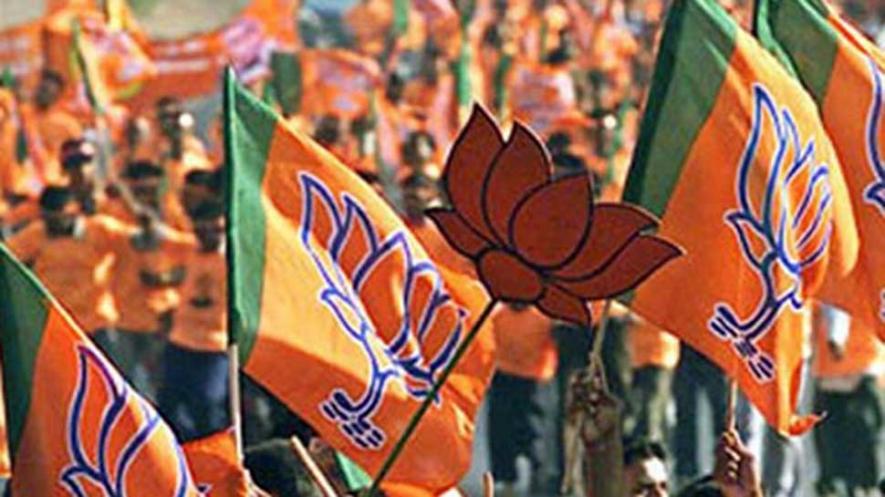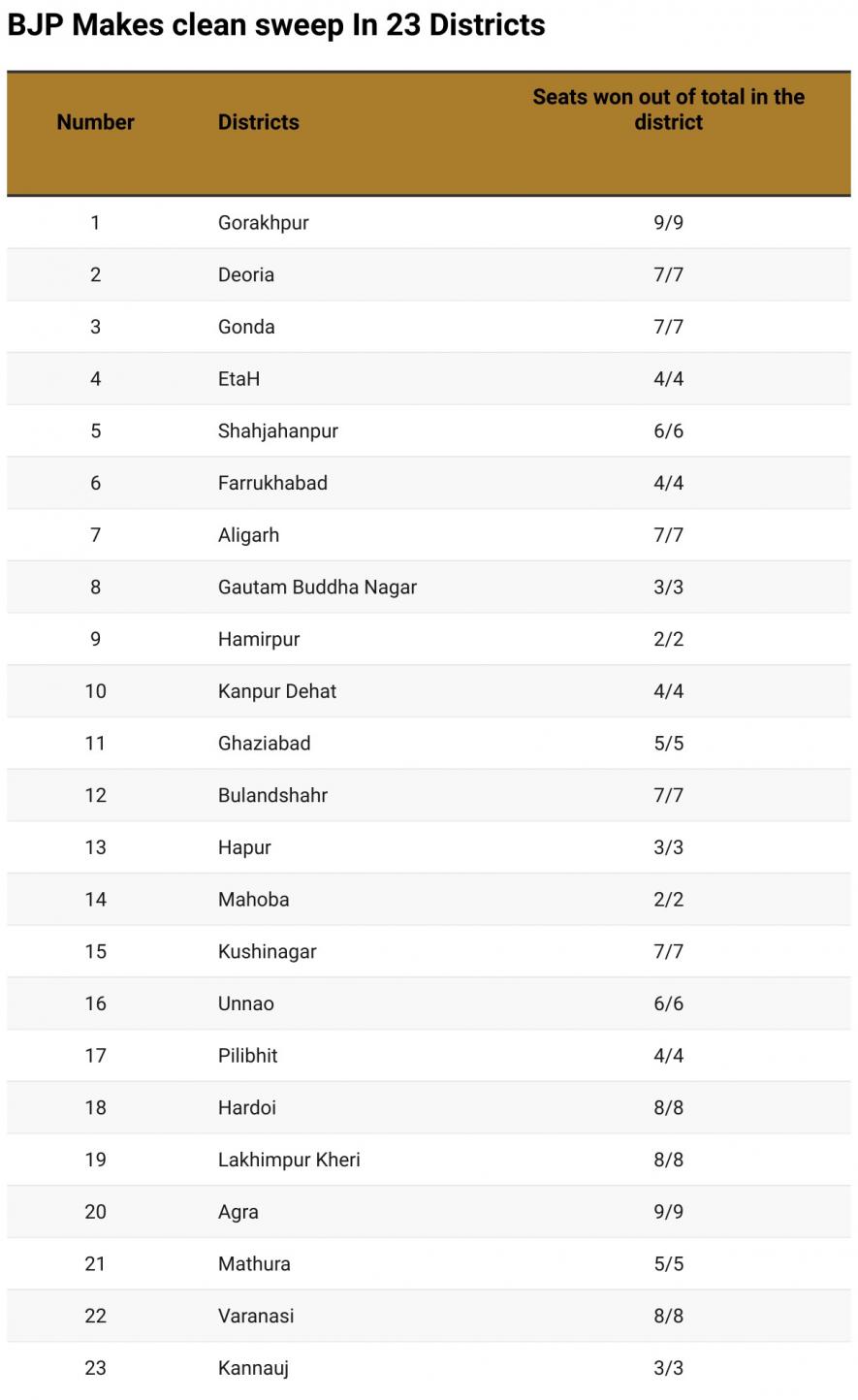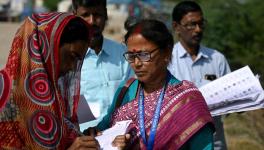Polarisation, Round-the-Year Groundwork & Modi Helped BJP Win Uttar Pradesh

Representational Image. Image Courtesy: Zee News
Lucknow: Yogi Adityanath has become the first Uttar Pradesh (UP) chief minister (CM) to retain power for the second consecutive term in the state after Narayan Dutt Tiwari in 1985 with the ruling Bharatiya Janata Party (BJP) winning 255 seats and its arch-rival Samajwadi Party (SP) 111 despite improving its vote share by nearly 10% and increasing its tally by 63 in the Assembly election, according to the Election Commission of India website.
Continuing with its dismal performance, the Congress won only two seats and the Bahujan Samaj Party (BSP) of four-time CM Mayawati was obliterated with just one seat despite getting 12.88% of votes.
Unlike the three-corner contests in the last several Assembly elections, it was a direct fight between the BJP and the SP this time. The BSP, which is said to have a 20% captive vote bank of Dalits, especially the Jatavs, got only a single seat—a huge fall from its 2017 tally of 19. Its vote share fell as well from 22.23% to a little more than 12%. The Congress, which had got 6.25% votes in 2017, was down to 2.4% by winning only two seats, five short of its 2017 tally.
The SP failed to ride the anti-BJP wave, generated by the protests against the three farm laws, the anger over rising prices of essential items, the stray cattle menace, COVID-19 mismanagement and unemployment.
BJP MAKES CLEAN SWEEP IN 23 DISTRICTS
Including Lakhimpur Kheri, the BJP made a clean sweep in 23 out of the 75 districts by winning all the seats. While some of the seats were BJP strongholds, the others were completely unexpected victories.
The party swept all the eight seats in Lakhimpur Kheri, which was the centre of fury last October when four farmers were mowed down by an SUV allegedly driven by Ashish Mishra, the son of minister of state for home affairs Ajay Mishra Teni. The ensuing violence killed three BJP workers and a journalist triggering furious criticism of the Adityanath government and allegations of the BJP going soft on a murder accused because of his father’s position.

The clean sweep of the eight seats in Lakhimpur Kheri—Palia, Nighasan, Gola Gokarnath, Sri Nagar, Dhaurahra, Lakhimpur, Kasta and Mohammadi—has raised eyebrows given the strong anti-BJP emotions in the aftermath of the incident.
Similarly, the BJP won Agra, Mathura and Bulandshahr, from where a huge chunk of farmers participated in the Ghazipur border protest, with a thumping majority.
All the nine seats, including Chillupar, in Gorakhpur, Adityanath’s home turf, were won by the BJP. Vinay Shankar Tiwari, son of former minister Harishankar Tiwari, lost the seat he won on a BSP ticket in the 2017 election after switching over to the SP.
Though the BJP swept all the seats in the 23 districts by securing more than 47% of votes—signifying clear support of voters—the SP performed better by bagging more than 70% of the seats in the Yadav belt of Etawah, Manipuri Kasganj, Etah and Ferozabad. But the SP lost the plot in the Awadh region. The BJP won all the eight seats in Sitapur and Lakhimpur, and all the four in Pilibhit despite the farmers unrest.
The SP performed poorly in Bundelkhand as well by failing to secure a single seat in Jhansi, Lalitpur, Mahoba and Hamirpur districts. The party bagged three seats in Fatehpur and only one in Chitrakoot. The party made a clean sweep in Ambedkar Nagar, Azamgarh, Ghazipur and Kaushambi.
Ram Dutt Tripathi, a former BBC journalist who has observed UP politics for more than three decades, attributed the BJP’s performance to the “victory of 80:20” in an obvious reference to the communal polarisation of Hindu and Muslim votes. “The saffron party managed to convince a majority of Hindus that if the Samajwadi Party comes to power, there will be goonda rule and Muslims will dominate the state. Several voters voted for the BJP thinking that Muslims will govern the state if the Akhilesh Yadav-led Samajwadi Party forms the government,” he told Newsclick.
The other “key factor” behind the BJP’s thumping majority, according to Tripathi, is that the BJP and its ideological mentor Rashtriya Swayamsevak Sangh (RSS) “work on the ground for the whole year while the SP doesn’t”. Besides, the marginalised are happy with the welfare schemes, he added.
Besides, the “BSP’s candidate selection helped the BJP and damaged the SP on dozens of seats”, Tripathi said. “The selection of candidates seems to have dented it more with the BSP’s core voters shifting to the BJP and a small chunk to the SP.”
Pointing out the SP’s “drawbacks”, Tripathi said, “The party lacks micromanagement as it was not on the ground for five years. It did not train its workers for polling management. Akhilesh himself was active only a couple of months before the election and was the lone warrior who fought the BJP; his social engineering with regional parties could not gain momentum.”
Echoing similar views, Lucknow-based veteran journalist Atul Chandra said that the “much talked about backlash from the farming community in western Uttar Pradesh remained only on paper”. Similarly, the anger of people in Lakhimpur region could not turn into votes against the BJP. “The BJP made impressive gains in both the regions due to religion and nationalism. The ruling party managed to give the message to the masses that only Modi can help develop the country and he has certainly improved the country’s image across the globe,” he told Newsclick.
Besides, the transfer of a chunk of BSP’s vote share to the BJP also worked in the ruling party’s favour, Chandra added. “One can tally the data on seats where the Samajwadi Party lost the battle with merely 500-1,000 votes and the BSP played a significant role in the BJP’s win,” he said adding that the SP is “not as strong in Uttar Pradesh as the TMC in West Bengal. The TMC defeated the BJP without any support. But the Akhilesh-led alliance could not do it here despite social engineering with many caste-based regional parties”.
When asked why inflation, stray cattle menace, unemployment and other issues could not work against the BJP, Chandra said, “There is an undercurrent of Hinduism in the state from a long time which might not be visible but it is a reality. The other issues, including stray cattle menace, could not become the poll agenda because they [farmers and those affected by it] chose to vote for the BJP thinking there was no alternative.”
Badri Narayan, a political commentator and the director of the GB Pant Social Science Institute, Prayagraj, said that the SP voters were very vocal during this election and it was the key reason for the “counter-consolidation in the favour of the BJP”. The SP was “talking only on some issues before the election while the BJP was in touch with the beneficiaries of all the schemes in the last five years and build trust”, he told Newsclick.
The second key factor, according to Narayan, was Modi. Besides, “the SP has to evolve its cadres as it faces not only the election machinery of the largest party in the country but also the RSS and its men, who work on the ground around the year. Furthermore, trust among the marginalised sections need to be built by the Opposition, not before elections, but throughout the year”, he added.
Get the latest reports & analysis with people's perspective on Protests, movements & deep analytical videos, discussions of the current affairs in your Telegram app. Subscribe to NewsClick's Telegram channel & get Real-Time updates on stories, as they get published on our website.
























